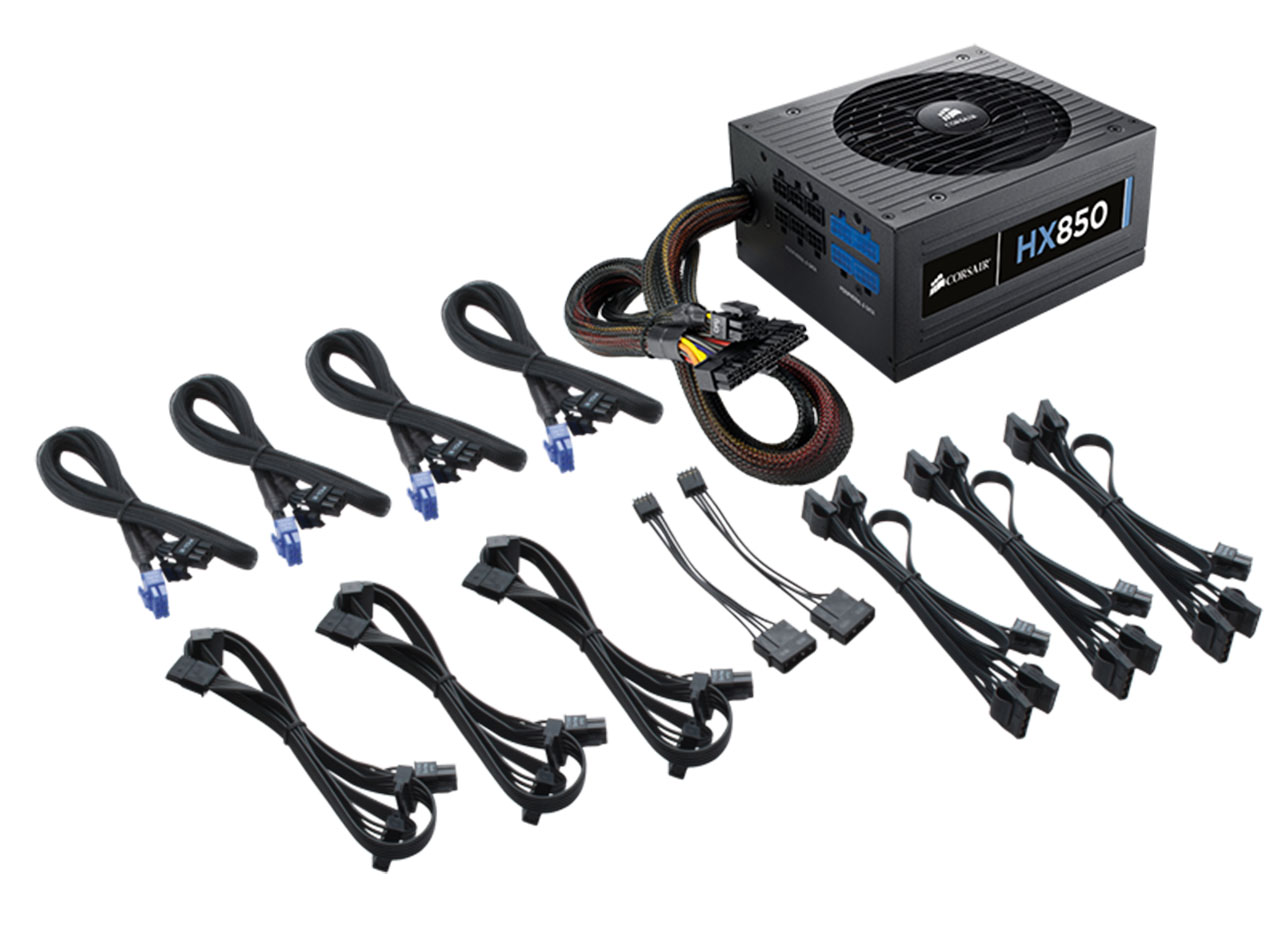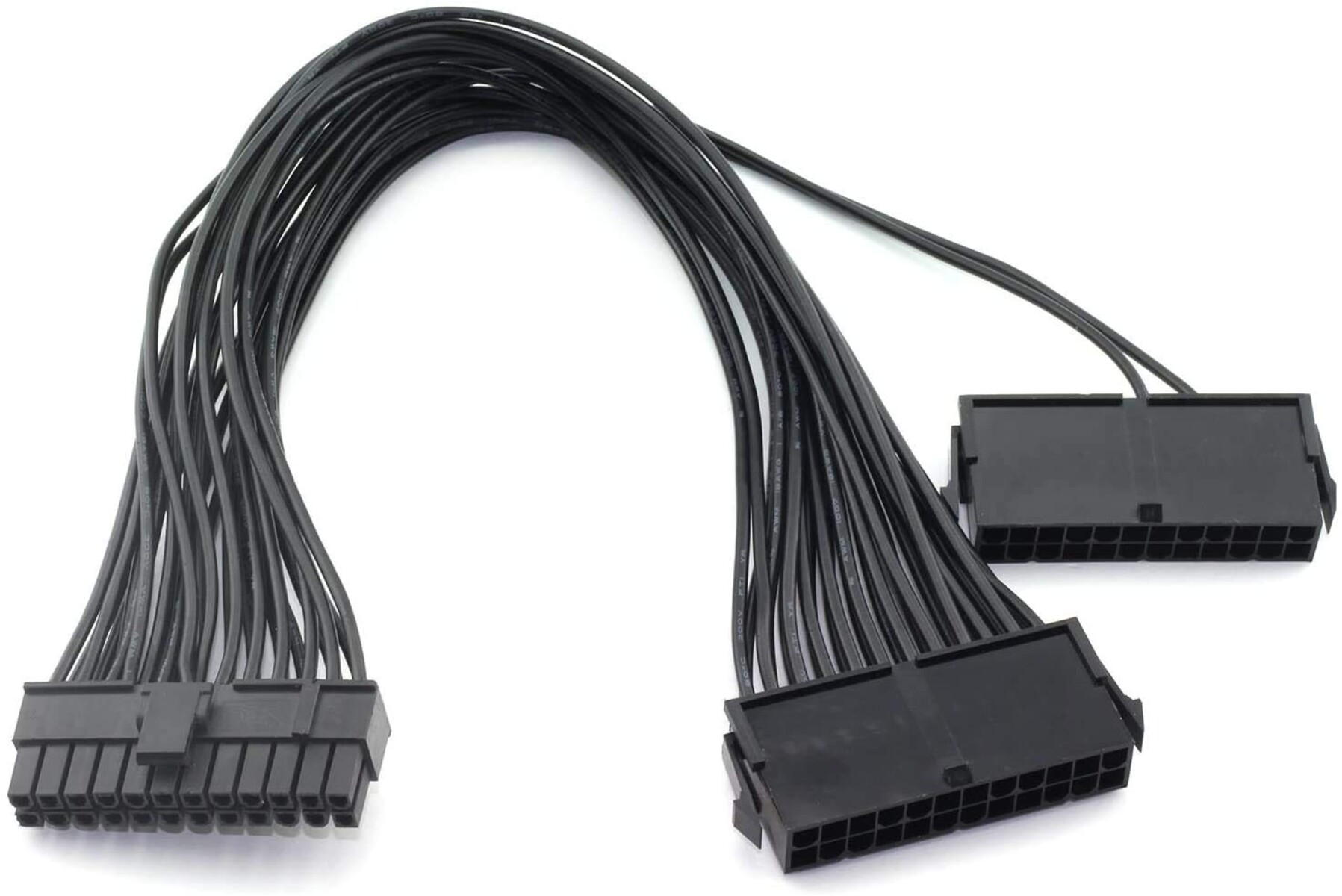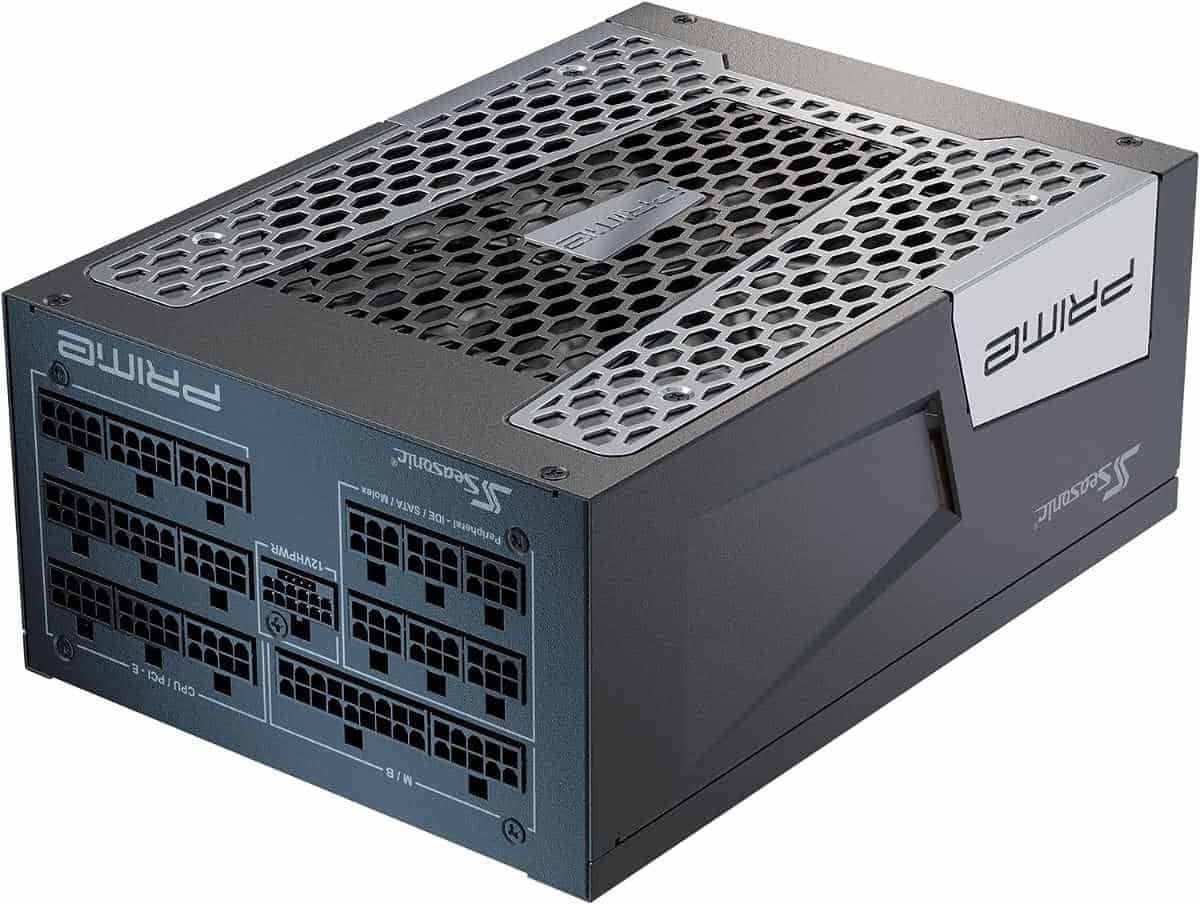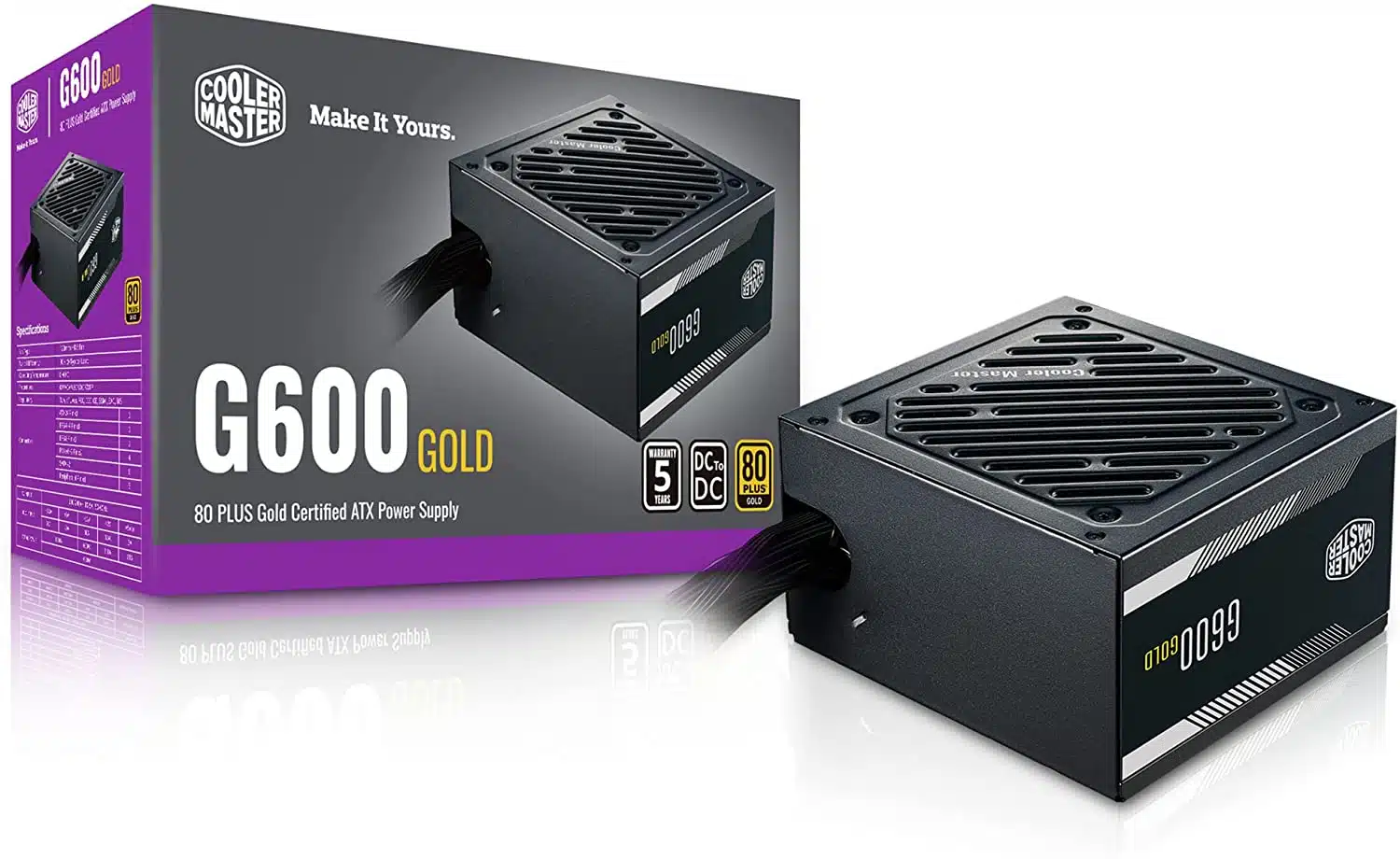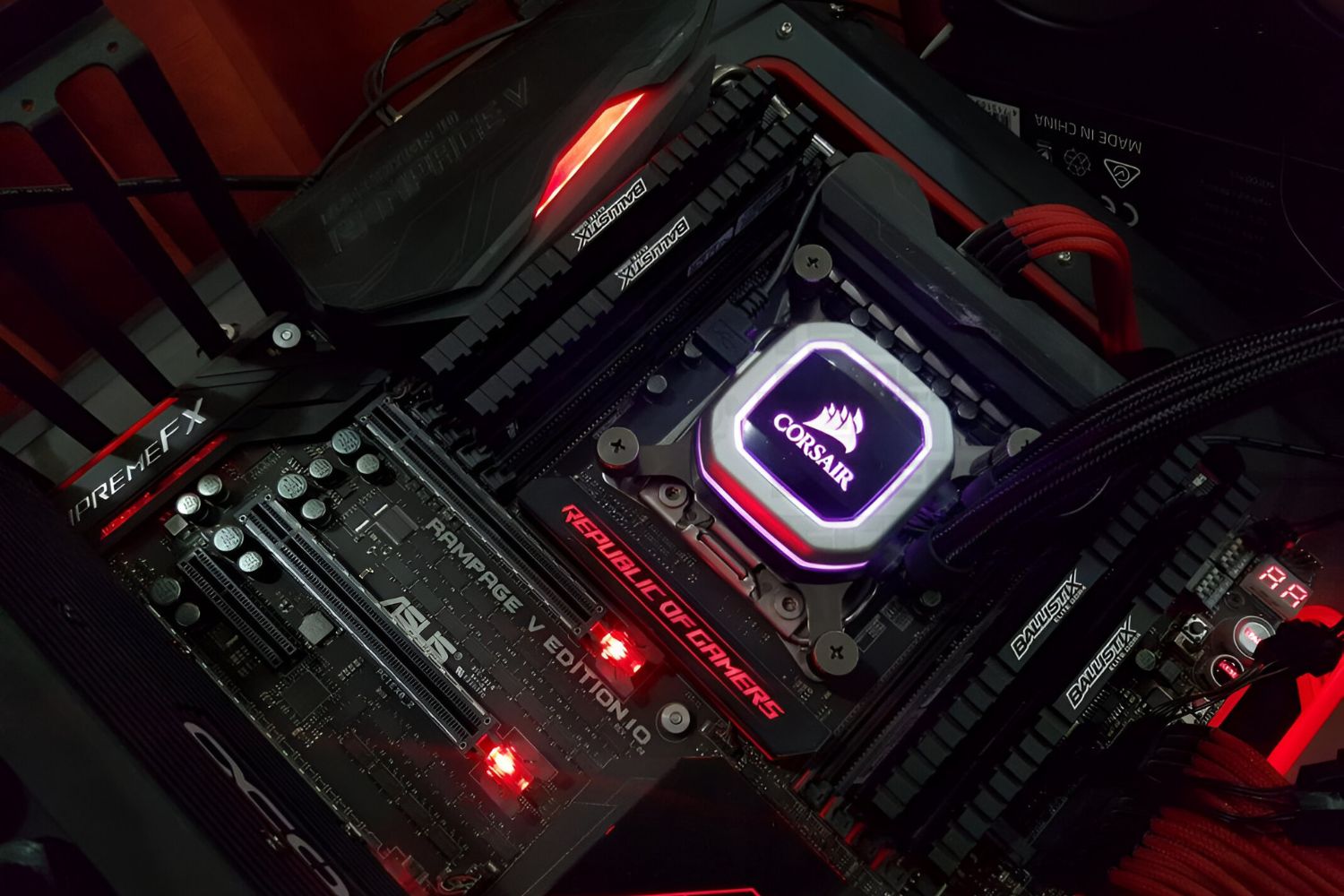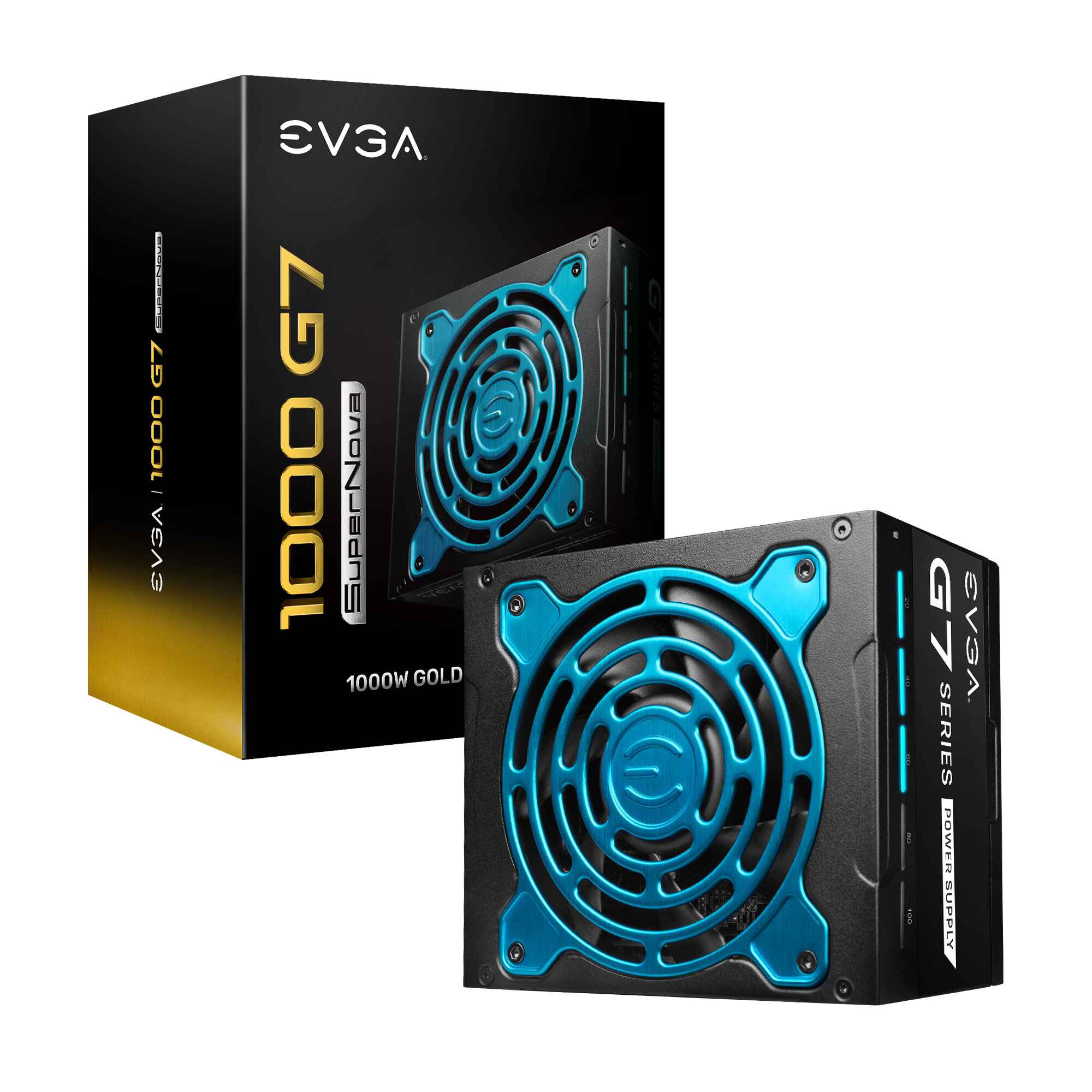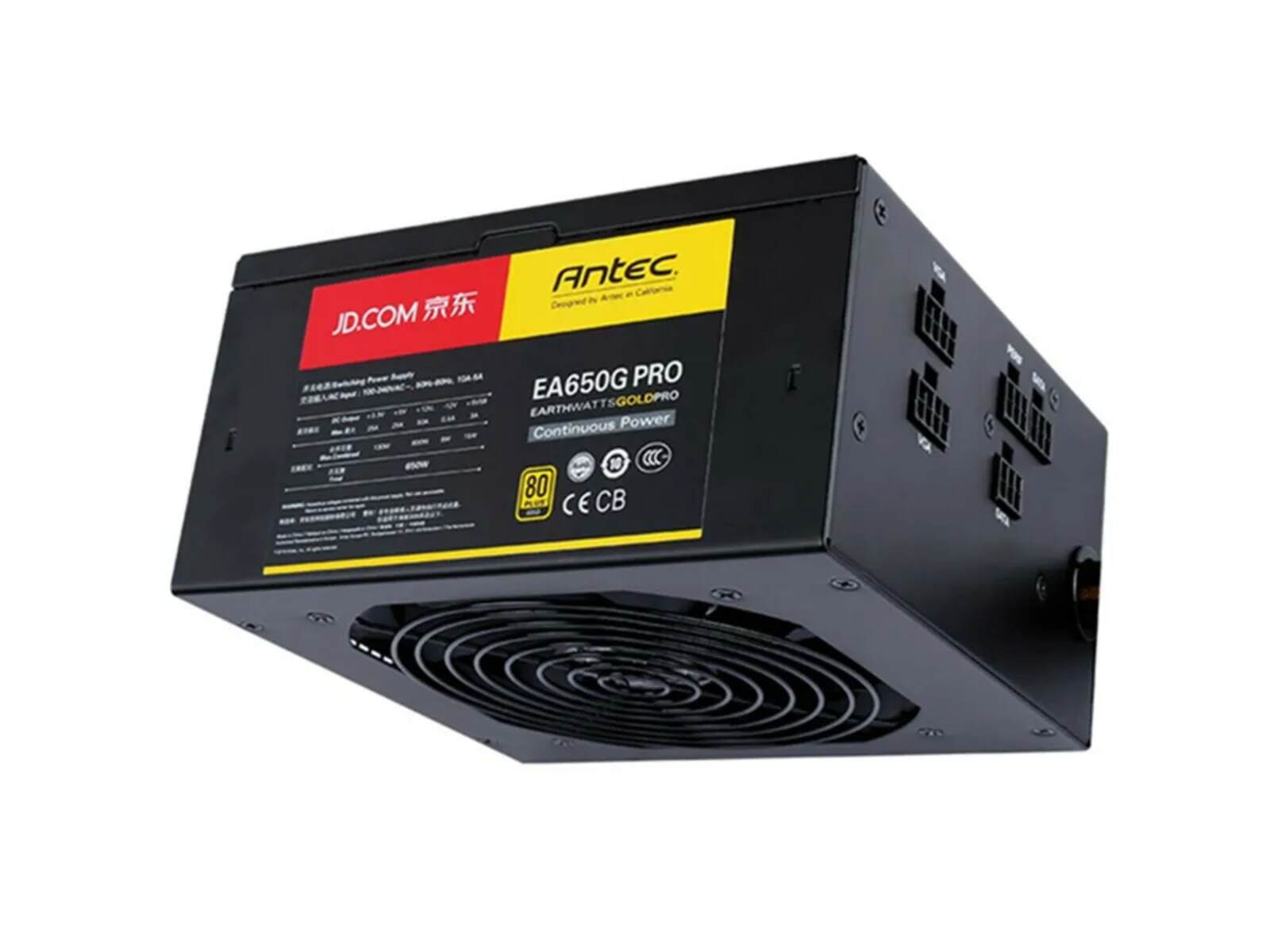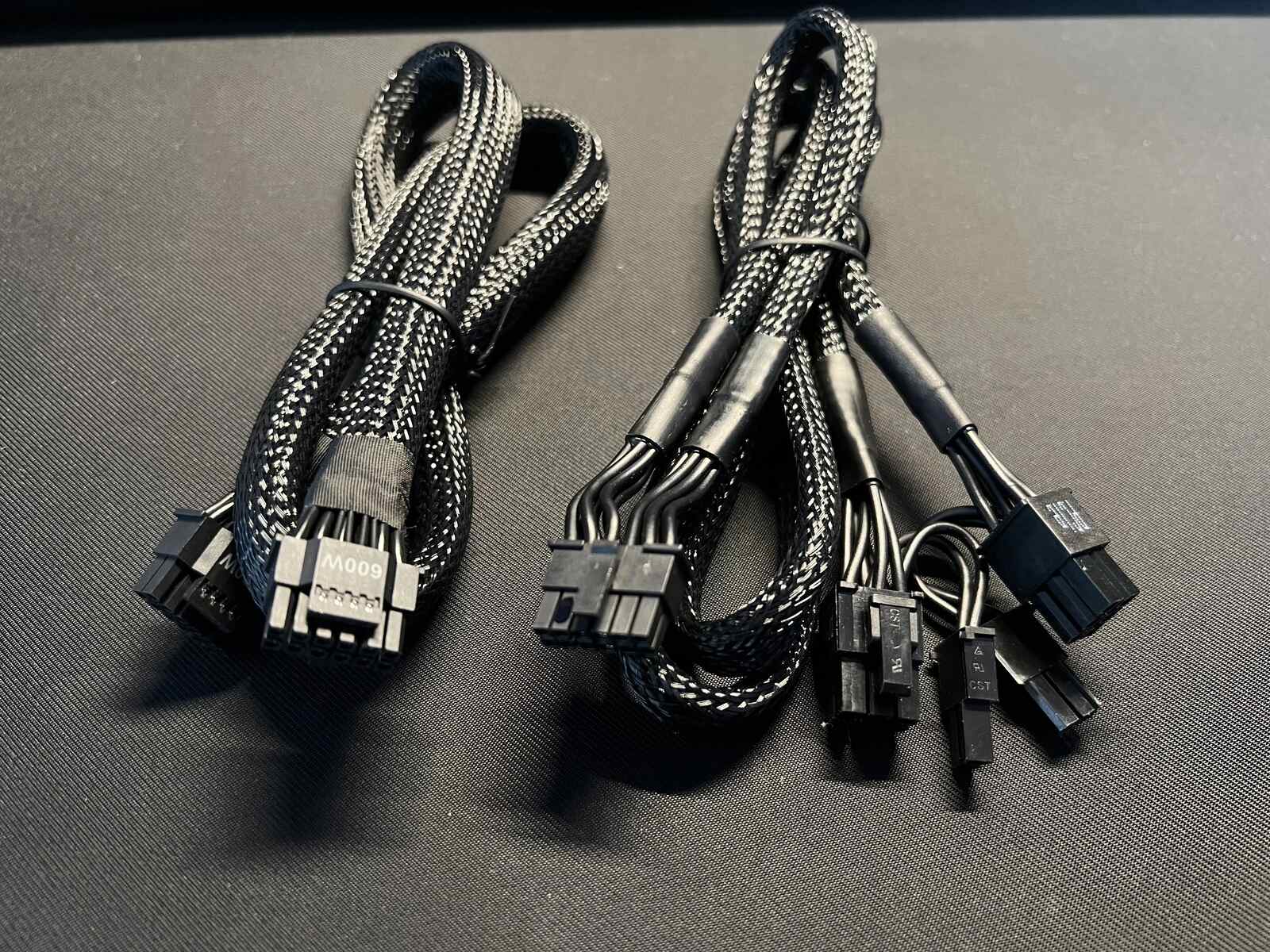Introduction
Welcome to the world of computer hardware! If you’ve ever wondered about the inner workings of a computer, you’ll likely come across terms like SATA power cables and PSUs. In this article, we’ll be exploring the number of SATA power cables that a PSU typically has and why they are crucial for your computer system.
Before we dive into the details, let’s understand what a SATA power cable actually is. SATA stands for Serial Advanced Technology Attachment, and it is a type of cable used to connect various components in a computer system, such as hard drives, solid-state drives (SSDs), optical drives, and other storage devices. The SATA power cable is responsible for providing the necessary electrical power to these components, allowing them to function properly.
Now, you might be wondering, why are SATA power cables important in a computer system? Well, the answer is simple. Without these cables, your storage devices wouldn’t receive the necessary power to operate. This means that you wouldn’t be able to access your data, install programs, or even boot up your computer. In short, SATA power cables are the lifeline that keeps your storage devices up and running.
With that said, let’s move on to the main question of this article – how many SATA power cables does a PSU typically have? Well, the answer can vary depending on the specific PSU model and brand. However, most modern PSUs come with multiple SATA power cables. These cables are usually designed with connectors that allow you to power multiple SATA devices simultaneously.
Having multiple SATA power cables in your PSU has several benefits. Firstly, it provides you with the flexibility to connect multiple storage devices without the need for additional adapters or splitters. This is especially useful if you have a system with multiple hard drives, SSDs, or other SATA devices.
What is a SATA power cable?
A SATA power cable is a crucial component in any computer system that uses Serial ATA (SATA) interface for connecting storage devices. It is responsible for delivering electrical power to various components such as hard drives, SSDs, and optical drives.
The SATA power cable is designed with multiple connectors on a single cable, allowing you to connect and power multiple SATA devices simultaneously. These connectors are typically L-shaped and have a distinctive design that prevents them from being connected incorrectly, ensuring a secure and efficient power connection.
Compared to its predecessor, the Molex power connector, the SATA power cable offers several advantages. First and foremost, SATA power cables take up less space, making cable management inside your computer case much easier. This is particularly beneficial for smaller form factor systems or systems with limited space.
Furthermore, SATA power cables provide a more reliable power connection due to their superior design. The connectors are securely latched into the devices, reducing the chances of accidental disconnection. Additionally, SATA power cables deliver a consistent and stable power supply, ensuring the smooth and uninterrupted operation of your storage devices.
Another notable advantage of SATA power cables is that they support hot-swapping. This means that you can connect or disconnect SATA devices while your computer is powered on, without the need to restart or shut down your system. This is especially useful for external hard drives or hot-swappable storage bays.
It’s worth mentioning that SATA power cables are backward compatible with older SATA versions. This means that you can still use a SATA power cable with an older SATA device or vice versa. However, it’s important to note that the maximum data transfer speed will be limited to the capabilities of the slower component.
In summary, a SATA power cable is a vital component that provides the necessary electrical power to your storage devices in a computer system. Its compact design, reliable power connection, and support for hot-swapping make it an essential feature for modern computer hardware.
The Importance of SATA Power Cables in a Computer System
SATA power cables play a crucial role in the operation and functionality of a computer system. Without these cables, the storage devices in your computer, such as hard drives and SSDs, would be unable to receive the necessary power to function properly. Let’s explore the importance of SATA power cables in more detail.
First and foremost, SATA power cables are responsible for delivering the required electrical power to your storage devices. These devices, especially modern SSDs, require a stable and consistent power supply to perform optimally. A reliable SATA power cable ensures that your storage devices receive the power they need, allowing you to access and store data without any interruptions.
In addition to powering the storage devices, SATA power cables also ensure the overall stability and performance of your computer system. Faulty or inadequate power supply can result in data corruption, performance degradation, or even system crashes. By using high-quality SATA power cables, you can prevent these issues and maintain a stable and efficient computer system.
Another crucial aspect of SATA power cables is their role in cable management. These cables are designed with cleanliness and organization in mind. The slim and flexible nature of SATA power cables allows for easy routing and tidying of cables inside your computer case. This not only improves the airflow and cooling efficiency but also makes maintenance and upgrades much simpler.
Moreover, SATA power cables offer versatility and compatibility. These cables are commonly used across a wide range of devices, including desktop computers, gaming consoles, and external storage enclosures. This means that you can easily swap or transfer storage devices between different systems without compatibility issues, as long as the devices support SATA interface.
Lastly, SATA power cables support hot-swapping, which is a major convenience in certain scenarios. Hot-swapping allows you to connect or disconnect SATA devices while your computer is powered on, without the need for system restarts. This can be especially useful for professionals who regularly work with external SSDs or for individuals who frequently need to exchange storage devices.
In summary, SATA power cables are not just mere connectors, but rather essential components that ensure the proper functionality, stability, and performance of your computer system. By using high-quality SATA power cables, you can ensure the reliable power delivery to your storage devices, maintain optimal performance, and simplify cable management.
How Many SATA Power Cables Does a PSU Typically Have?
The number of SATA power cables that a power supply unit (PSU) typically has can vary depending on the specific model and brand. However, most modern PSUs come equipped with multiple SATA power cables to accommodate the various storage devices in a computer system.
A standard PSU commonly found in desktop computers usually provides at least two to four SATA power cables. This number is sufficient for most users who need to connect a couple of hard drives or SSDs. These power cables are designed with multiple connectors, allowing you to power multiple SATA devices simultaneously.
However, higher-end PSUs or those specifically designed for gaming rigs or enthusiasts might offer even more SATA power cables. It is not uncommon to find PSUs that come with six or more SATA power cables. Having more SATA power cables can be beneficial for users who have a large number of storage devices or who require additional power for high-performance components.
Additionally, it’s important to consider the wattage of the PSU when determining the number of available SATA power cables. Higher wattage PSUs generally offer more power cable options, including SATA power cables. This is because they are designed to accommodate the power requirements of more demanding systems with multiple storage devices, graphics cards, and other power-hungry components.
It’s worth noting that the availability of SATA power cables also depends on the overall design of the PSU. Some PSUs come with modular cable systems, where the user can choose and connect the necessary cables as per their requirements. This allows for a more customized approach, ensuring that you only use the cables you need and reducing cable clutter inside the computer case.
When determining the number of SATA power cables you need, consider the number and type of storage devices you plan to connect. Ensure that your PSU offers an adequate number of SATA power cables to accommodate your current and future expansion needs. In case you run out of SATA power cables, there are solutions available, such as SATA power cable extensions or splitters, which can help you connect additional devices.
To summarize, PSUs typically include two to four SATA power cables, but higher-end PSUs or those designed for more demanding systems may offer even more. Consider the number and type of storage devices you plan to connect, as well as the wattage of the PSU, when determining the appropriate number of SATA power cables for your computer system.
Factors that Determine the Number of SATA Power Cables in a PSU
The number of SATA power cables included in a power supply unit (PSU) is influenced by several factors, which can vary depending on the specific PSU model and brand. Understanding these factors can help you determine the appropriate PSU for your computer system. Let’s explore the key factors that determine the number of SATA power cables in a PSU.
1. Wattage Rating: The wattage rating of a PSU is a crucial factor in determining the number of available SATA power cables. Higher wattage PSUs are designed to support more power-hungry components and systems with multiple storage devices. Consequently, they tend to offer more SATA power cables to accommodate the increased power requirements.
2. Efficiency and Certification: PSU manufacturers often emphasize efficiency and environmental-friendly designs, which can influence the number of SATA power cables included. Efficient PSUs sometimes feature reduced cable clutter, offering modular options for cable connections. This allows users to connect only the necessary cables, including SATA power cables, effectively reducing cable management challenges inside the computer case.
3. Target Market: The target market of a PSU can also influence the number of SATA power cables provided. PSUs aimed at basic desktop systems or entry-level users may have fewer SATA power cables since they typically have fewer storage devices. On the other hand, PSUs designed for gaming rigs, workstations, or enthusiasts usually offer more SATA power cables to accommodate multiple high-performance storage devices.
4. Form Factor: The physical size and form factor of a PSU can affect the number of SATA power cables it includes. Smaller PSUs, such as those used in mini-ITX or small form factor (SFF) systems, might have limited space for additional cables. Consequently, these PSUs may offer fewer SATA power cables compared to standard-sized PSUs used in traditional desktop cases.
5. Manufacturer and Model: Different PSU manufacturers may have their own design philosophies and specifications that influence the number of SATA power cables included. It’s important to research the specific PSU model and brand to determine the number of SATA power cables offered. Reviews and specifications provided by the manufacturer can help you make an informed decision.
When choosing a PSU, consider the number and type of storage devices you plan to connect to your computer system. Assessing the power requirements of these devices, along with considering other factors like wattage, efficiency, target market, and form factor, will help you determine the appropriate number of SATA power cables you need.
It’s worth noting that if you find yourself with a PSU that lacks sufficient SATA power cables for your needs, there are solutions available. SATA power cable extensions, splitters, or even separate SATA power cable kits can be purchased separately to expand the number of available connections and ensure compatibility with your storage devices.
Benefits of Having Multiple SATA Power Cables in a PSU
Having multiple SATA power cables in your power supply unit (PSU) offers several advantages, especially for users with numerous storage devices or those who require additional power for high-performance components. Let’s explore the benefits of having multiple SATA power cables in more detail.
1. Flexibility for Multiple Devices: One of the significant benefits of having multiple SATA power cables is the ability to connect and power multiple storage devices simultaneously. With each SATA power cable providing power to a different device, you can easily connect multiple hard drives, SSDs, or optical drives without the need for additional adapters or splitters. This level of flexibility is particularly useful for users who require a large amount of storage or have a system with multiple drives.
2. Improved Cable Management: Multiple SATA power cables offer improved cable management inside your computer case. Each cable can be routed efficiently to the respective storage device, reducing cable clutter and enhancing airflow. With better cable management, you can maintain a cleaner and more organized system that promotes optimal cooling and easier maintenance or upgrades in the future.
3. Powering High-Performance Components: High-performance storage devices, such as NVMe SSDs or large-capacity hard drives, often demand more power than standard drives. Having multiple SATA power cables ensures that these power-hungry devices receive the necessary power supply without putting undue strain on a single cable or compromising performance. This is especially important for users who require maximum performance from their storage devices for tasks like gaming, video editing, or rendering.
4. Compatibility and Expandability: Multiple SATA power cables allow for compatibility and expandability. If you plan to upgrade or add more storage devices in the future, having extra SATA power cables readily available saves you the hassle of purchasing additional cables or adapters. This flexibility makes it easier to accommodate changing storage needs or add-on devices without any complications.
5. Maintenance and Troubleshooting: In the event of a failing storage device or a faulty SATA power cable, having multiple SATA power cables can simplify the troubleshooting process. You can easily identify and isolate the problematic cable or device without affecting the operation of other devices. This makes maintenance and troubleshooting tasks more efficient and less time-consuming.
6. Compatibility with Redundancy Features: Some high-end storage systems or RAID configurations require redundancy features to ensure data integrity and system reliability. Having multiple SATA power cables allows for the implementation of these redundancy features, as each device can be powered by a separate cable. This ensures that in the event of a single cable failure, other devices remain powered and operational.
In summary, having multiple SATA power cables in a PSU provides flexibility, improved cable management, compatibility, and expandability. It allows you to power multiple storage devices simultaneously, supports high-performance components, simplifies troubleshooting, and enables the implementation of redundancy features. When choosing a PSU, consider your current and future storage needs to determine whether having multiple SATA power cables is beneficial for your specific system requirements.
Potential Limitations in Having a Limited Number of SATA Power Cables
Having a limited number of SATA power cables in your power supply unit (PSU) can pose certain limitations, especially if you have multiple storage devices or require additional power for high-performance components. Let’s explore the potential limitations that arise from having a limited number of SATA power cables.
1. Limited Device Connectivity: If you have a limited number of SATA power cables, you might not be able to connect all of your desired storage devices to your computer system. This limitation can become problematic if you have multiple hard drives, SSDs, or optical drives that require power. You may need to prioritize which devices to connect or resort to using additional adapters or splitters, which can add complexity and potential points of failure to your system.
2. Reduced Flexibility for Expansion: With a limited number of SATA power cables, expanding or adding new storage devices to your system can become challenging. If you plan to upgrade your storage capacity or add high-performance storage devices, such as NVMe SSDs, you may be limited by the available power connections. This can restrict your ability to maximize the potential of your system or meet your evolving storage needs.
3. Dependence on Adapters or Splitters: In cases where you require more power connections than the available SATA power cables, you might need to rely on adapters or splitters to split the power from a single cable to multiple devices. While these solutions can temporarily address the issue, they may introduce additional points of failure or decrease the overall reliability of the power supply to your devices. It’s important to use high-quality adapters or splitters and ensure that the total power draw doesn’t exceed the capabilities of the power cable or the PSU.
4. Cable Clutter and Potential Heat Buildup: A limited number of SATA power cables can result in increased cable clutter inside your computer case. This can obstruct proper airflow, potentially leading to heat buildup and affecting the overall cooling efficiency of your system. Heat-related issues can have adverse effects on the longevity and performance of your storage devices. It’s crucial to ensure proper cable management and adequate cooling to mitigate any potential heat buildup caused by cable congestion.
5. Difficulty in Troubleshooting: When troubleshooting issues related to power supply or storage devices, having a limited number of SATA power cables can complicate the process. It can be challenging to isolate specific devices or cables causing problems without having enough spares or separate connections. This can lengthen the troubleshooting process and potentially lead to misdiagnosis or delays in resolving issues.
It’s important to consider your system’s storage requirements and future expansion plans. If you anticipate the need for multiple storage devices or higher power demands, it may be worth investing in a PSU with a higher number of SATA power cables or a modular PSU that allows for custom cable connections. Ensuring that your PSU can accommodate your storage needs will help you avoid the limitations that arise from having a limited number of SATA power cables.
Solutions for Systems with Insufficient SATA Power Cables
If you find yourself with a power supply unit (PSU) that has an insufficient number of SATA power cables to accommodate your storage devices or power requirements, there are several solutions available to overcome this limitation. Let’s explore some of the possible solutions for systems with insufficient SATA power cables.
1. SATA Power Cable Extensions: SATA power cable extensions are a simple and cost-effective solution to extend the length of your existing SATA power cables. These extensions typically come in various lengths and can be easily connected to your current cable, providing the extra length needed to reach your storage devices. SATA power cable extensions are widely available and compatible with most SATA power connectors.
2. SATA Power Cable Splitters: SATA power cable splitters allow you to divide the power from a single SATA power cable into multiple connections. This solution is useful if you have more storage devices than available SATA power cables. However, it’s important to ensure that the total power draw from the devices connected to the splitter does not exceed the capabilities of the power cable or the PSU. High-quality SATA power cable splitters should be used to avoid power distribution issues.
3. Modular PSU Upgrade: If you have a modular PSU or are planning to upgrade your PSU, consider selecting a model that offers a higher number of SATA power cables. Modular PSUs allow you to customize the cable connections based on your specific requirements. By choosing a PSU with more SATA power cables, you can ensure that you have sufficient power connections for all your storage devices without the need for additional adapters or splitters.
4. External Storage Solutions: If you have limited internal SATA power connections, you can consider utilizing external storage solutions. External storage devices often come with their own power source, eliminating the need for additional SATA power cables from your PSU. This can be particularly useful for users who need extra storage capacity or frequently transfer data between different systems.
5. PSU Upgrade: In some cases, upgrading to a higher wattage PSU that offers more SATA power cables may be necessary. This solution is suitable for users who have a significant number of storage devices, high-performance components, or power-demanding configurations. A higher wattage PSU not only provides additional SATA power cables but also ensures that your system has sufficient power capacity to support all components without straining the PSU.
Before implementing any of these solutions, it’s important to consider the power requirements of your storage devices and make sure that the upgraded or added SATA power cables can support the devices’ power needs. Additionally, always use high-quality cables, splitters, or adapters to ensure a reliable and stable power supply to your storage devices.
In summary, some of the solutions for systems with insufficient SATA power cables include using SATA power cable extensions, splitters, upgrading to a PSU with more SATA power cables, utilizing external storage solutions, or upgrading the entire PSU. Assess your specific needs and compatibility requirements to determine the most suitable solution for your system and ensure smooth and reliable power delivery to your storage devices.
Conclusion
SATA power cables are vital components in a computer system, responsible for delivering the necessary electrical power to storage devices such as hard drives, SSDs, and optical drives. The number of SATA power cables in a power supply unit (PSU) varies depending on factors such as the PSU model, wattage rating, and target market.
Having multiple SATA power cables in a PSU offers several benefits. It provides flexibility for connecting multiple storage devices simultaneously, improves cable management, supports high-performance components, and allows for future expansion. However, a limited number of SATA power cables can pose limitations, such as reduced device connectivity, dependence on adapters or splitters, cable clutter, and troubleshooting challenges.
In cases where the number of SATA power cables is insufficient, there are various solutions available. These include using SATA power cable extensions or splitters, upgrading to a modular PSU with more SATA power cables, utilizing external storage solutions, or upgrading the entire PSU. It’s important to consider your specific system requirements and compatibility when choosing a solution.
Ultimately, having an adequate number of SATA power cables ensures that your storage devices receive the necessary power supply, maintaining optimal performance and stability. By understanding the importance of SATA power cables and considering the factors that determine their availability, you can make informed decisions and ensure smooth power delivery to your storage devices.







